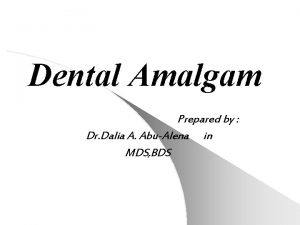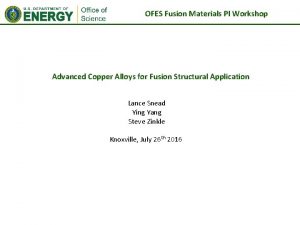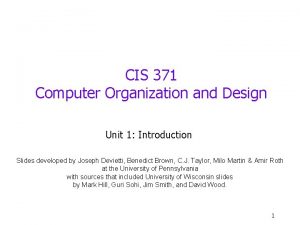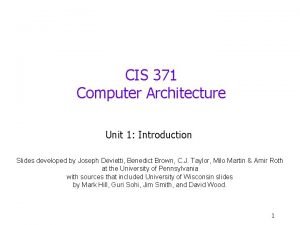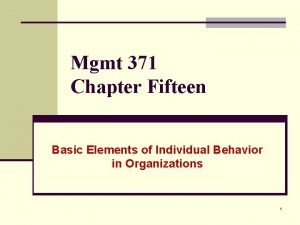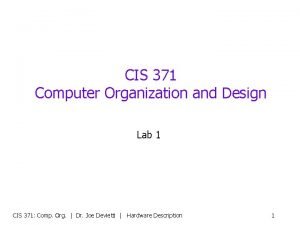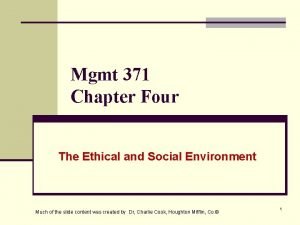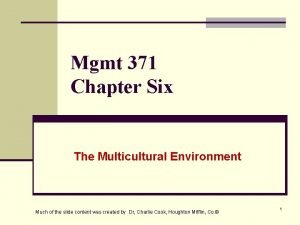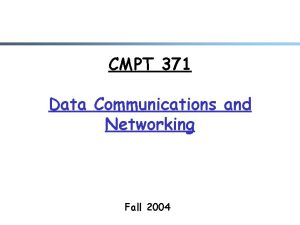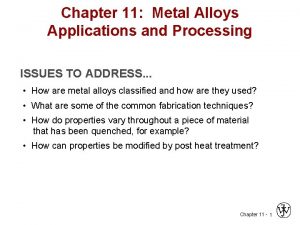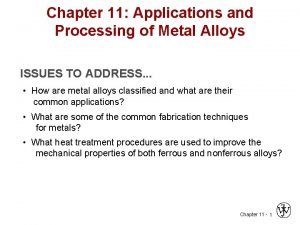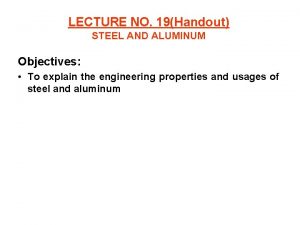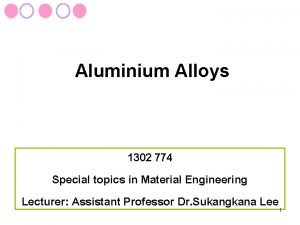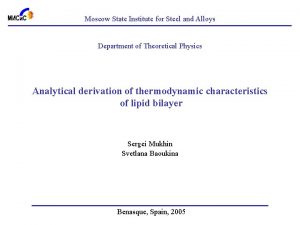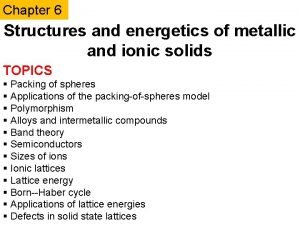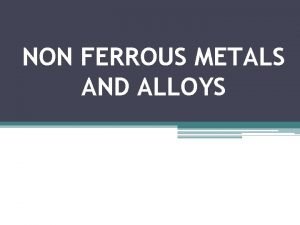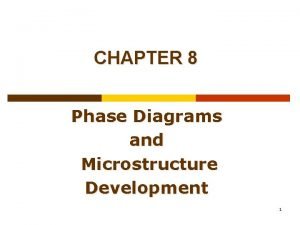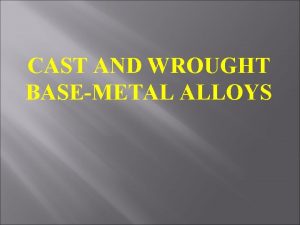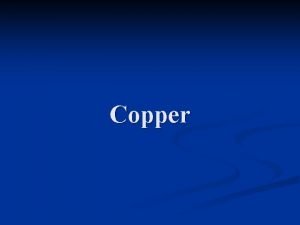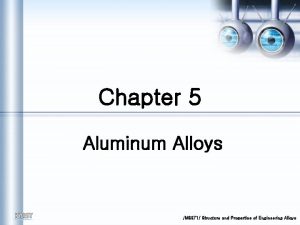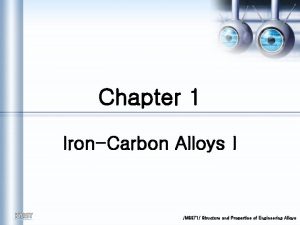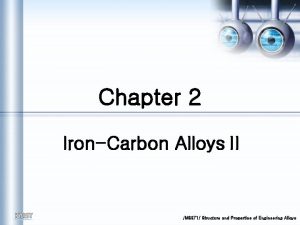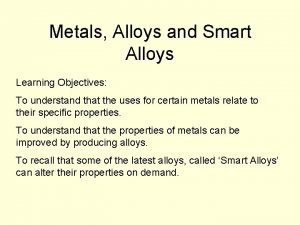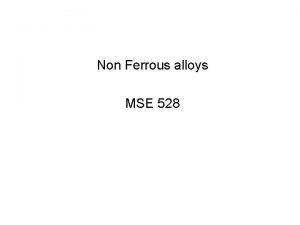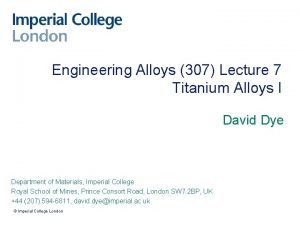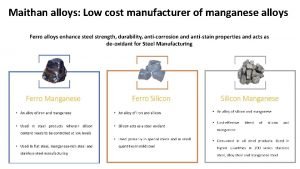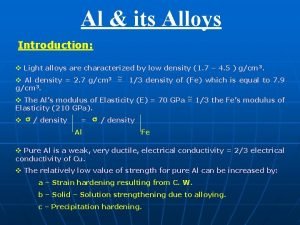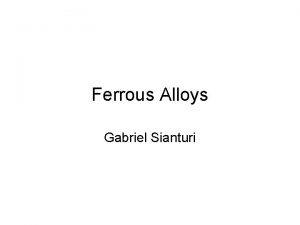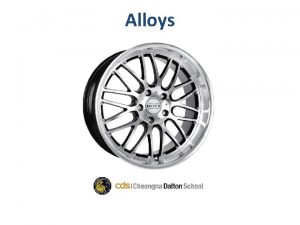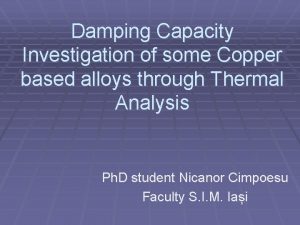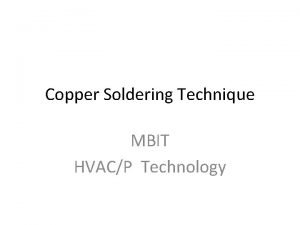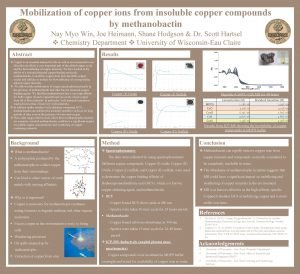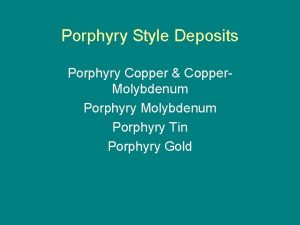Chapter 6 Copper and Copper Alloys MS 371























- Slides: 23

Chapter 6 Copper and Copper Alloys /MS 371/ Structure and Properties of Engineering Alloys

Overview of copper alloys • Main characteristics – High electrical , ease of • Relative electrical and thermal conductivities (at 20 o. C) /MS 371/ Structure and Properties of Engineering Alloys

Overview of copper alloys • Cu + Zn (黃銅) : good ! – high Zn, high strength: edge of stairs, coin – small damping capacity: instrument (징) • Cu + Sn (靑銅) : good – resistance statue • Cu + Ni : 100圓, 500원 • Cu + Pb : good mechanical work • Cu + Be : material of (no spark, not such as flint or firestone) /MS 371/ Structure and Properties of Engineering Alloys

Production of copper Copper sulfide Impurity in Cu bad effect on expected Cu properties high purity Cu is preferable * Simplified process: Cu 2 S + O 2 2 Cu (blister copper) + SO 2 - just by , copper sulfide reacts with oxygen in the atmosphere then, copper is deposited at the bottom - at the end of this converter blow, some of Cu is oxidized to Cu 2 O /MS 371/ Structure and Properties of Engineering Alloys

Classification of copper alloys /MS 371/ Structure and Properties of Engineering Alloys

Electrolytic tough-pitch (ETP) copper • minimum 99. 9% Cu, 0. 04% O (oxygen limit: 0. 02~0. 05%) • least of the industrial coppers (wire, rod, plate. . ) Oxygen is almost in Cu /MS 371/ Structure and Properties of Engineering Alloys

Microstructure of tough-pitch copper Cu 2 O interdendritic eutectic Hot-rolled stringers of Cu 2 O and complete recrystallization Internal hole by steam along grain boundary • above 400 o. C, Cu 2 O + H 2 ( in Cu) 2 Cu + H 2 O (steam) - deoxidation to occur in using H 2 containing reducing gas - small hydrogen atoms are able to diffuse into the solid copper - however, the formed by the reaction is insoluble in copper - thus, electrolytic tough-pitch copper cannot be used above 400 o. C /MS 371/ Structure and Properties of Engineering Alloys

Oxygen-free high conductivity (OFHC) copper • Removal of oxygen by flowing gas of CO, N Hot-worked oxygen-free copper Oxygen-free copper exposed to H 2 at 850 C for 0. 5 h • By removing oxygen, - free of , clear structure, absence of hydrogen - however, it is not used for due to high cost, but for electronics /MS 371/ Structure and Properties of Engineering Alloys

Cu-Zn alloys (황동, Brass) (coin) Cartridge brass - best combination of and occurs at 70 Cu-30 Zn - very important in industry Muntz metal for heat exchanger /MS 371/ Structure and Properties of Engineering Alloys

Structure of Cu-Zn alloys • Commercial brass can be divided into 2 groups – α brass with the α structure and containing up to about 30% Zn – brass with the α + β twophase structure, which is mainly based on a 60 Cu: 40 Zn ~30% Zn ductility and toughness is increasing up to ~30% Zn Phase diagram of the copper-zinc /MS 371/ Structure and Properties of Engineering Alloys

Structure of Cu-Zn alloys 90% Cu - 10% Zn 70% Cu - 30% Zn • with a higher Zn content, more annealing in α grains are observed /MS 371/ Structure and Properties of Engineering Alloys

Effect of small amount of plastic deformation • Pure copper deformed 5% – cellular distribution of dislocation tangles • Red brass (85% Cu - 15% Zn) deformed 10% – planar arrays of dislocations developing • High brass (63% Cu – 37% Zn) deformed 10% – well-defined planar arrays of dislocations /MS 371/ Structure and Properties of Engineering Alloys

Change in dislocation arrangements • Increasing Zn content lowering the stacking-fault energy ( ) of Cu • In pure Cu, high SFE dislocation can cross slip easily easy slip • With Zn, lower SFE difficult short stacking-fault ribbons Effect of Zn content on the stacking-fault energies of Cu-Zn brasses [After J. Hedworth and G. Pollard, Metal. Sci. J. 5(1971): 42. ] /MS 371/ Structure and Properties of Engineering Alloys

Corrosion of Cu-Zn alloys (Brass) stress corrosion cracking Intergranular stress-corrosion crack in cartridge brass (70%Cu-30%Zn) • • α brass containing more than 15% Zn • stress-corrosion cracking (SCC) SCC occurs usually along the Dezincification of cartridge brass tube corrodes preferentially and leaves a porous residue of Cu and corrosion products in, for example, /MS 371/ Structure and Properties of Engineering Alloys

Cu-Sn alloys (청동, Bronze) • ‘Sn’ addition to prevent ; ‘tin bronze’ • ‘P’ addition as a agent during casting; ‘phosphor bronzes’ • High strength, wear resistance, good sea-water corrosion resistance Comparison of purpose Brass Bronze Good formability Excellent corrosion resistance /MS 371/ Structure and Properties of Engineering Alloys

Copper-Aluminum alloys • So-called Aluminum Bronze • Quite hard, high strength • Good corrosion resistance due to aluminum /MS 371/ Structure and Properties of Engineering Alloys

Structure of Cu-Al alloys Increasing strength, ductility • • ~9. 5% Al, decomposition Rapidly quenched to RT transformation Cu-Al phase diagram /MS 371/ Structure and Properties of Engineering Alloys

Mechanical properties of Cu-Al alloys ~10% Al, β phase increase drops off rapidly - but it has good tensile strength for bearings /MS 371/ Structure and Properties of Engineering Alloys

Cu-Si alloys • ‘Silicon Bronze’ contains 1~3% Si • Low-cost substitute for Tin Bronze • Good corrosion resistance Above the Si solubility(4% Si), the good properties drop off Cu-Si phase diagram /MS 371/ Structure and Properties of Engineering Alloys

Cu-Be alloys • Containing 0. 6~2% Be with 0. 2~2. 5% Co • -hardened and heat-treated as high as 212 ksi • strength developed in commercial copper alloys /MS 371/ Structure and Properties of Engineering Alloys

Cu-Be alloys - Precipitation hardened with 2% Be : Supersaturated solid solution GP zones γ’ γ (flat plates) GP zones parallel to (010) and (100) matrix planes Intermediate ordered γ’ Cu. Be phase Eutectoid-type precipitation of ordered Cu. Be γ phase in a disordered α-matrix /MS 371/ Structure and Properties of Engineering Alloys

Cu-Ni alloys • Cu + 10, 20, 30% Ni : ‘cupronickels’ • Used for condenser tubes and plates, heat exchangers, chemical process equipment • Copper and nickel are completely soluble in all proportions in the solid state /MS 371/ Structure and Properties of Engineering Alloys

Effect of nickel on mechanical & electrical properties high electrical resistivity solid solution hardening Strength of nickel Strength of copper low dependency of temp mechanical properties electrical properties /MS 371/ Structure and Properties of Engineering Alloys
 Manipulation of dental amalgam
Manipulation of dental amalgam Advanced copper alloys
Advanced copper alloys Cis 371
Cis 371 Cis 371
Cis 371 Mgmt 371
Mgmt 371 800 en yakın onluğa yuvarlama
800 en yakın onluğa yuvarlama Cis 371
Cis 371 284 371 in word form
284 371 in word form Mgmt 371
Mgmt 371 Cmpt 371
Cmpt 371 Mgmt 371 final exam
Mgmt 371 final exam 6 371
6 371 Cmpt 371
Cmpt 371 Calister
Calister Applications and processing of metal alloys
Applications and processing of metal alloys Aluminum and its alloys
Aluminum and its alloys Aluminum and its alloys
Aluminum and its alloys Moscow institute of steel and alloys
Moscow institute of steel and alloys Microfusion cast & alloys
Microfusion cast & alloys Substitutional alloys examples
Substitutional alloys examples Shape memory alloys lecture notes
Shape memory alloys lecture notes Ferrous material
Ferrous material Development of microstructure in isomorphous alloys
Development of microstructure in isomorphous alloys Wrought metal in cast rpd is used for
Wrought metal in cast rpd is used for
